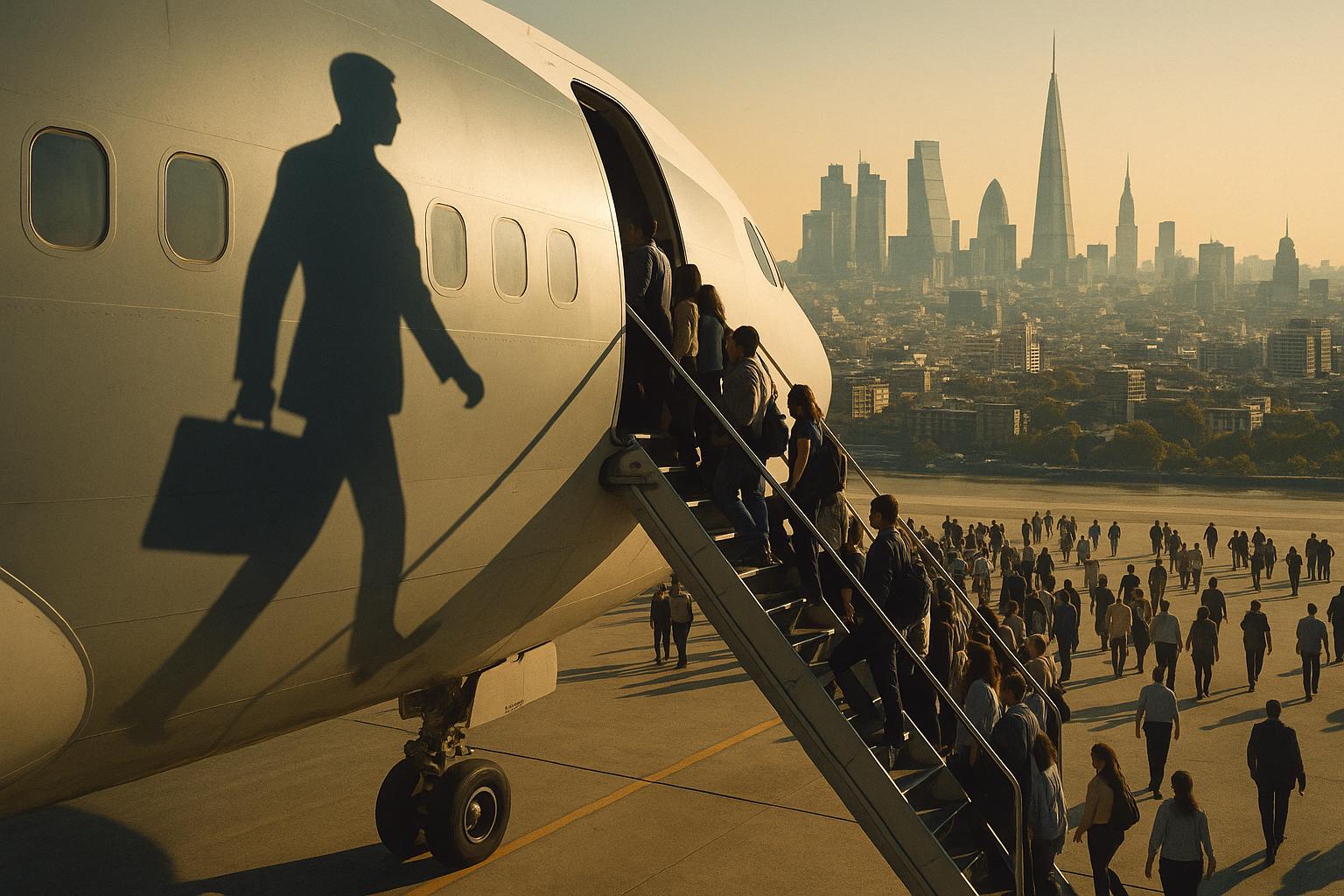British Prime Minister Sir Keir Starmer has firmly ruled out any future expansion of visa allowances for Indian workers in the UK, underscoring that such measures are not part of current or forthcoming plans. This clear stance emerges as he embarks on his first official trade mission to India, accompanied by over 100 British business leaders from various sectors, with the aim of capitalising on the recently signed UK-India free trade agreement. Sir Keir emphasised that the trip focuses on boosting investment and business ties rather than revisiting immigration policies.
The free trade agreement, signed in July following prolonged negotiations, is hailed as the UK’s most significant post-Brexit trade deal. It aims to reduce tariffs on key British exports, including whisky and automobiles, and is projected to increase bilateral trade by approximately £25.5 billion by 2040. Starmer highlighted that the deal serves as a "launchpad for growth," especially as India is expected to become the world’s third-largest economy by 2028. Among the delegation are high-profile companies such as BP, Rolls-Royce, BT, and Diageo, alongside university vice-chancellors and cultural leaders keen to strengthen UK-India educational and cultural collaboration.
Despite the enthusiasm surrounding the trade deal, Starmer was clear in addressing demands from Indian business leaders and some UK sectors for more visas, particularly for highly skilled professionals in IT and other industries. He responded that the visa situation remains unchanged as a result of the agreement and reiterated, "No, that isn't part of the plans." This stance reflects a broader UK government policy to tighten immigration controls amid domestic political pressures and public concern about immigration levels. While the UK is open to attracting global talent, it is not seeking special visa provisions for Indian workers, contrasting with previous US policies that tightened visa access under former President Donald Trump.
The Labour leader's position also takes into account an existing returns agreement with India, which he described as a "non-issue" in terms of deportation and security cooperation. Starmer noted ongoing considerations about potentially linking visa issuance to a country’s willingness to take back its nationals, signalling a cautious and firm approach to immigration that balances economic ambitions with domestic political realities.
The Prime Minister pointed out that business growth and prosperity should stem from enhanced business-to-business engagement supported by the trade deal rather than immigration changes. British Airways and Manchester Airport, for example, are increasing direct flights to India to support expanding economic interaction. Additionally, prominent British universities, which have a historic presence in India, are among the delegation looking to expand educational collaboration—not through visa concessions but through building institutional ties.
This diplomatic trade mission, described by Downing Street as the largest UK government trade mission to India, seeks to capitalise on the lowered tariffs and new market access created by the landmark agreement. Part of the deal that attracted controversy domestically was the exemption of Indian workers temporarily seconded to the UK and their employers from national insurance contributions for three years—a long-standing issue that had delayed the agreement's conclusion but was ultimately agreed upon, marking a significant concession to India. This aspect has drawn criticism from some UK politicians who see it as creating a "two-tier" tax system, especially given recent increases in national insurance contributions for UK employers.
In sum, while the free trade deal promises substantial economic opportunities, Sir Keir Starmer’s government remains firm on immigration controls, prioritising trade and investment growth without loosening visa restrictions for Indian workers. This approach reflects a balancing act between deepening UK-India economic ties and addressing domestic political concerns about immigration.
📌 Reference Map:
- Paragraph 1 – [1], [2], [5]
- Paragraph 2 – [1], [3], [5]
- Paragraph 3 – [1], [2], [5]
- Paragraph 4 – [2], [5]
- Paragraph 5 – [1], [3], [4], [5]
- Paragraph 6 – [1], [3], [4], [6]
- Paragraph 7 – [1], [2], [5], [6]
Source: Noah Wire Services
